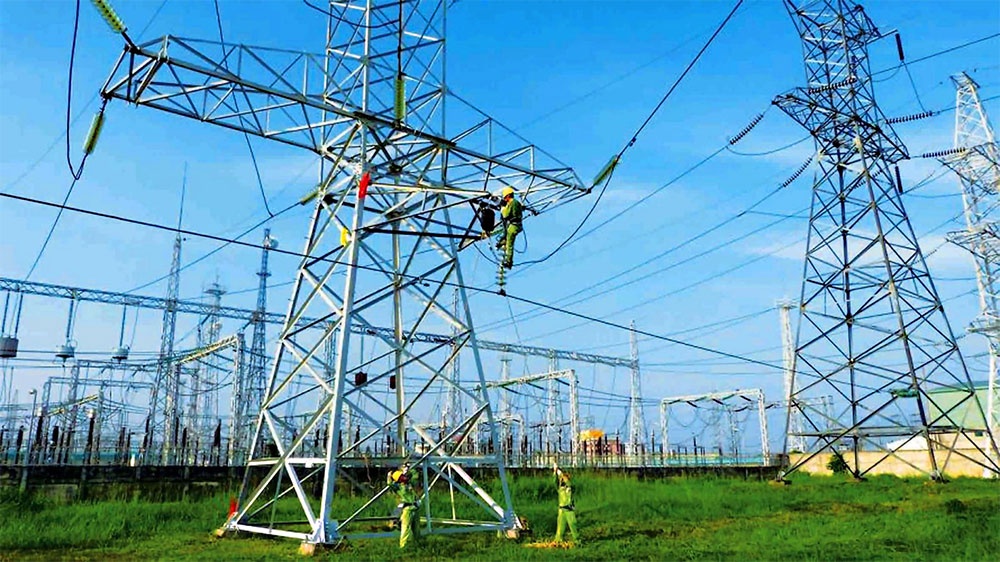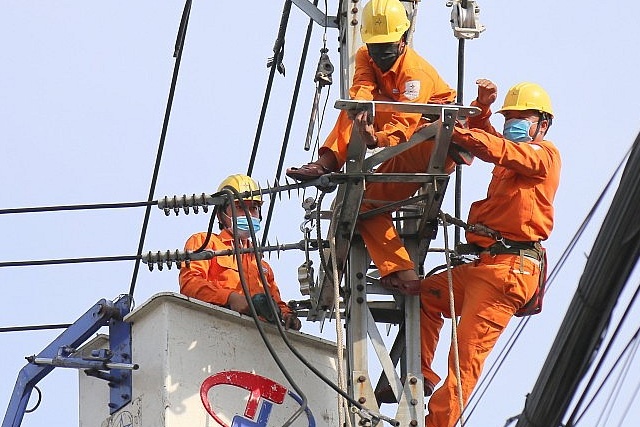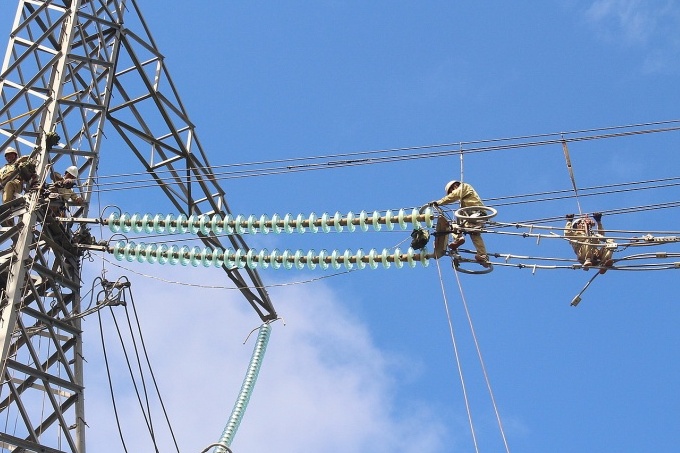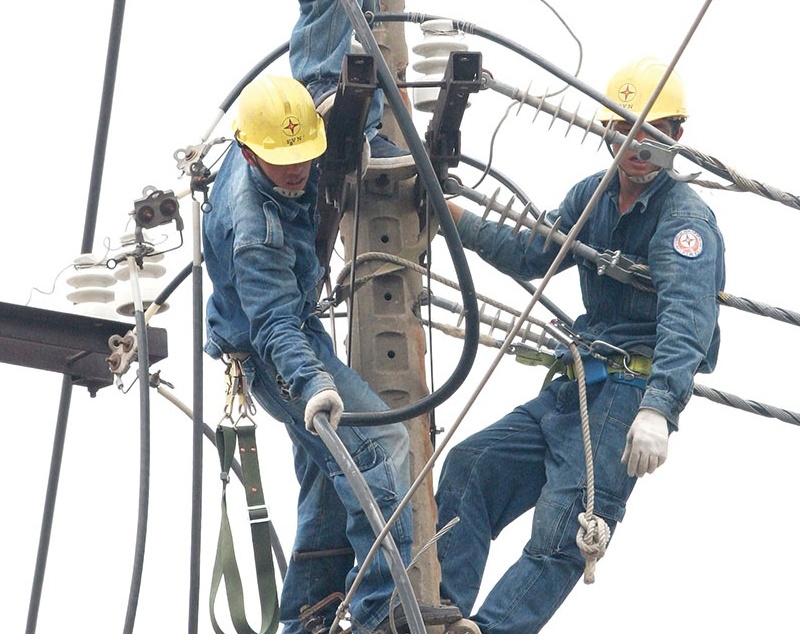Reorganisation in hand for 2023’s electricity supply
The National Load Dispatch Centre (NLDC) predicts that extreme temperatures will prevail well into July. If Hoa Binh Hydroelectricity’s stagnant water level falls below 1,920MW, in particular, the scenario will be extremely fraught.
 |
| Reorganisation in hand for 2023’s electricity supply, illustration photo/ Photo Le Toan |
Last week, the centre’s deputy director Nguyen Quoc Trung said, “We require the assistance of our customers to keep up a stable electricity system in the north.”
The Vietnamese government is considering energy conservation as a remedy for the current electricity shortage. Phuong Hoang Kim, director of the Energy Efficiency and Sustainable Development Department at the Ministry of Industry and Trade (MoIT), stated that it is feasible to save energy in Vietnam’s industrial sector, with a potential area of 30-35 per cent.
Vietnam’s industries use more than half of the nation’s total energy, according to a survey by the National Energy Efficiency Programme. Kim estimated that if industrial enterprises conserve at least 2 per cent of their annual electricity consumption, the nation will save approximately 1.6 billion kWh annually, which is equivalent to over $136 million in electricity savings.
“Currently, the country has 3,068 establishments, the majority of which are industrial production enterprises, with an annual energy consumption of at least 1,000 TOE, or six million kWh. These businesses consume an annual average of 80 billion kWh of electricity,” Kim said.
The MoIT launched the National Electricity-Saving Movement in 2023 with the support of all provinces as well as power companies and major energy consumers. The majority of businesses are familiar with the laws and regulations governing the economical and efficient use of energy. However, Kim discovered that a great many firms have not implemented it or enacted it properly.
The related data also highlights Vietnam’s inefficient energy consumption. Vietnam’s current primary energy intensity index of approximately 400 TOE generates $1,000 in GDP.
This number is 30 per cent higher than Thailand, 60 per cent higher than Malaysia, and 4-5 times higher than developed nations like Japan and the United States. Moreover, the electricity elasticity coefficient – the ratio between the growth rate of electricity demand and the growth rate of the GDP – of Vietnam in recent years has tended to decrease but is still at 1.3-1.4, demonstrating that energy consumption is inefficient.
The likelihood of a power shortage persists when annual economic growth exceeds 6-7 per cent. The MoIT has submitted a report to the prime minister regarding the issuance of a directive to increase electricity savings by 2 per cent per year between now and 2025 and in subsequent years, highlighting that electricity demand remains significant at 8.5 per cent.
“It is essential to transition to a mandatory and legalised mechanism, and simultaneously, it’s important to have a financial mechanism for economical and efficient use of electricity,” said Vo Quang Lam, deputy general director of Electricity of Vietnam, providing remedies that provide economic leverage and encourage potential individuals and businesses to participate in electricity conservation.
“At present, encouraging people and businesses to use energy economically and efficiently is insufficient,” Lam said.
In sweltering and arid conditions for an extended period of time, each kWh of electricity saved is “extremely precious,” according to Lam. In the past, the country has conserved more than six million kWh of electricity per day.
“Compared to the present need for electricity, which is about 800 million kWh, this is an enormous amount that helped the electricity industry combat the issue of power shortage,” Lam added.
| On June 8, the prime minister issued Directive No.20/CT-TTg on enhancing electricity savings towards 2025 and beyond. This directive requires the entire nation to save at least 2 per cent of its annual electricity consumption while lowering power loss across the entire electrical system to less than 6 per cent by 2025. The order of the prime minister also specifies that by 2030, half of office buildings and half of residential houses will use self-sufficient and self-consumable rooftop solar power, and that by the end of 2025, all street lighting will use LED. |
 | PM orders solutions to ensure power supply in dry season Prime Minister Pham Minh Chinh has ordered drastic measures to ensure electricity supply in this dry season and the coming time. |
 | Prime Minister seeks electricity supply guarantees Prime Minister Pham Minh Chinh has requested that the Ministry of Industry and Trade (MoIT) conduct a thorough examination and assessment of the electricity supply situation by June 10. The PM believes it is particularly necessary to evaluate emerging factors to improve the efficacy and productivity of Electricity of Vietnam (EVN) and to devise proactive and expeditious response scenarios. |
 | Northern Vietnam lacks between 30 and 50 million kWh daily The Ministry of Industry and Trade (MoIT) has warned that the northern power grid faces a shortfall of approximately 4,350MW. It has a median daily generation of approximately 30.9 million kWh; however, the largest daily output can reach 50.8 million kWh. |
 | Northern region facing risk of daily power shortage: official The northern region is facing the risk of power shortage at almost every point of time each day, according to Tran Viet Hoa, head of the Electricity Regulatory Authority of Vietnam under the Ministry of Industry and Trade (MoIT). |
 | North's electricity supply may be strained until July In the event that power shortages in the northern region of Vietnam continue for an extended period of time, the operation of the power grid will be significantly hampered. |
What the stars mean:
★ Poor ★ ★ Promising ★★★ Good ★★★★ Very good ★★★★★ Exceptional
Related Contents
Latest News
More News
- Heavy industries set for pilot greenhouse gas quotas (December 25, 2025 | 10:00)
- Swedfund invests in MSME growth and climate action in Vietnam (December 19, 2025 | 11:42)
- GreenYellow brings solar energy to light up remote schools in Tuyen Quang province (December 19, 2025 | 08:00)
- Charge+, Grab partner to develop EV charging network in Vietnam (December 18, 2025 | 17:11)
- Linking sci-tech and innovation to Vietnam’s net-zero future (December 18, 2025 | 14:31)
- Driving double-digit growth through green and circular transformation in Vietnam (December 17, 2025 | 09:00)
- Standard Chartered and ACCA deepen collaboration to develop Vietnam’s talent for a sustainable future (December 15, 2025 | 18:18)
- Schaeffler reports strong early output from Dong Nai solar project (December 12, 2025 | 15:16)
- Forestry conference highlights biodiversity and sustainability goals (December 09, 2025 | 13:35)
- Home Credit honoured among top 10 sustainable companies in trade and services (December 09, 2025 | 12:18)

 Tag:
Tag:





















 Mobile Version
Mobile Version